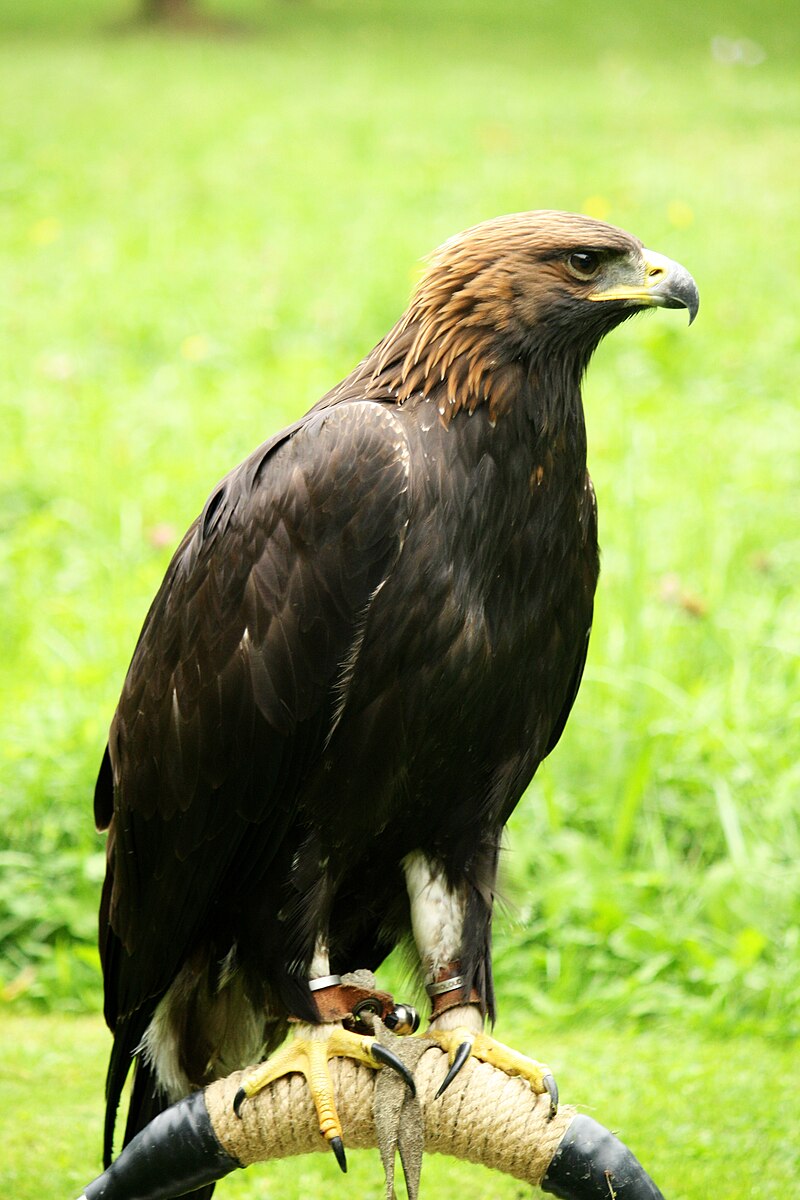Golden Eagles are not cold-blooded, but rather warm-blooded animals, also known as endotherms. They maintain a consistent internal body temperature of approximately 104 to 106 degrees Fahrenheit, even in cold weather conditions.
Eaglets’ Dependence on Parental Warmth
When eaglets are born, they have only natal down which does not provide the ability to maintain temperature. Therefore, until the thermal down comes in at about 10 to 14 days, the eaglet is dependent on the parents to provide warmth as well as protection from sun, rain, or snow.
Adaptations for Staying Warm
 Image source: Golden Eagle by Atillak
Image source: Golden Eagle by Atillak
Golden Eagles have several adaptations to help them stay warm in cold weather:
Insulating Feathers
Their feathers provide excellent insulation, with two layers of feathers keeping them warm and dry through winter’s deepest cold and icy rain. Stiff exterior covert feathers zip together over fluffy down feathers, creating an overcoat that channels water away from their skin, absorbs solar energy, and reduces energy loss.
Feather Erection
When eagles are cold, a specialized muscle at the root of their body hair erects their feathers, increasing the depth of warm air that surrounds them and keeping them toasty even in subzero temperatures.
Counter-Current Heat Exchange
Golden Eagles also have a built-in counter-current heat exchange system in their legs, which allows them to maintain a safe core temperature and keep their bare feet and legs from freezing or leaking too much heat. The arteries and veins in a bald eagle’s legs run close together, allowing cold venous blood returning to an eagle’s core to wick heat away from warm arterial blood flowing to its feet, cooling it to just above freezing to minimize radiative heat loss and warm enough to prevent frostbite.
Blood Flow Regulation
Golden Eagles can reduce blood flow to their bare skin and extremities, which limits radiative heat loss and increases the amount of blood available for absorbing and transporting calories from food. They also lower their body temperature at night, reducing the temperature difference between their body and the outside world, which lets them burn fewer calories to stay warm.
Protective Behaviors
Finally, Golden Eagles seek protective microclimates and reduce activity in cold weather. They tuck their heads and feet in to minimize heat loss and protect bare skin, and they may huddle together in groups to conserve heat.
Conclusion
In summary, Golden Eagles are not cold-blooded but rather warm-blooded animals with various adaptations to help them stay warm in cold weather conditions. From their insulating feathers to their counter-current heat exchange system and protective behaviors, Golden Eagles are well-equipped to thrive in even the harshest winter environments.
References:
– How do eagles stay warm in cold weather? – Raptor Resource Project. (2024, January 20). Retrieved from https://www.raptorresource.org/2024/01/20/flashback-blog-how-do-eagles-stay-warm-in-cold-weather/
– Archive – January 2018 – Illinois Department of Natural Resources. (2018, January). Retrieved from https://dnr.illinois.gov/outreach/kidsconservation/archive/2018/archivejan2018.html
– Thermoregulation in Eagles – Loudoun Wildlife Conservancy. (2022, March 18). Retrieved from https://loudounwildlife.org/2022/03/thermoregulation-in-eagles/.


